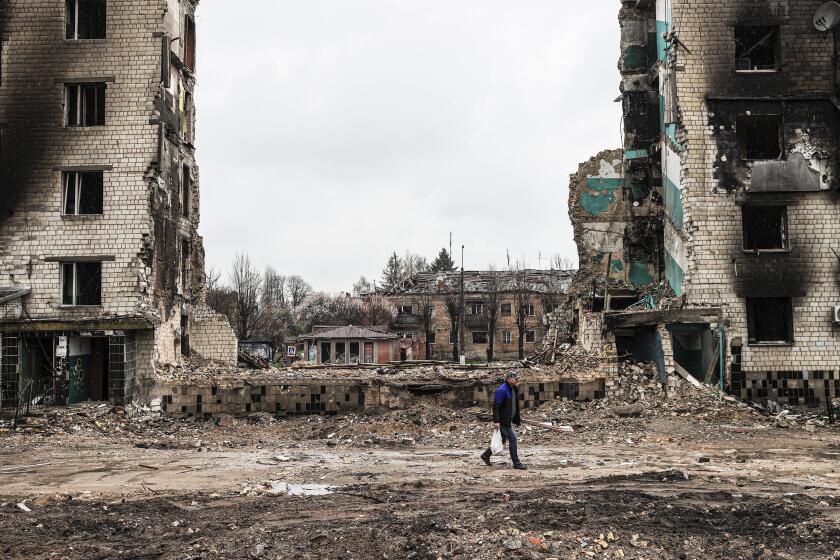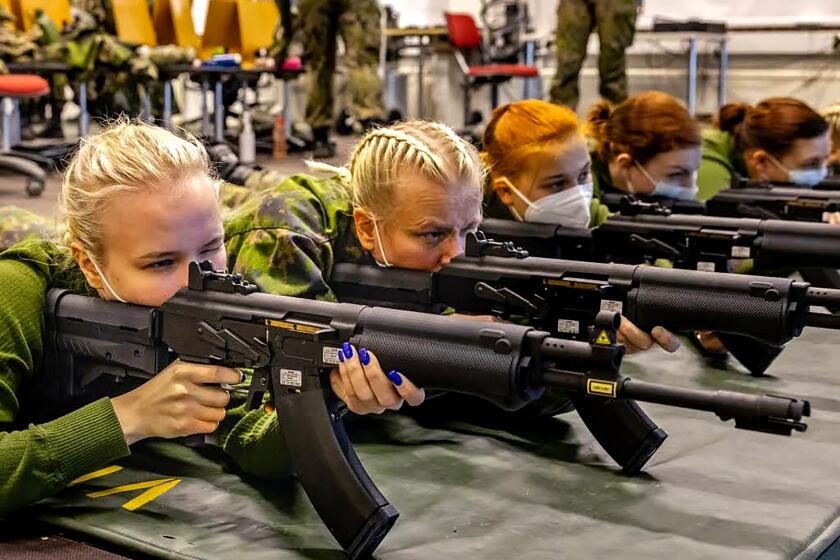
- Share via
KRAMATORSK, Ukraine — Following the highest-level U.S. mission to Ukraine since the start of the war, the secretaries of State and Defense said Monday that the Biden administration was intent on helping the country win its war against Russia and on seeing Moscow “weakened to the point” where it cannot mount such aggression again.
To that end, the U.S. pledged an additional $300 million in military aid to Ukraine, promised to nominate an ambassador to Kyiv and said the U.S. Embassy there would reopen as soon as possible.
“The first step in winning is believing that you can win,” Defense Secretary Lloyd J. Austin III told reporters Monday after crossing back into Poland from Ukraine. “We believe that they can win if they have the right equipment, the right support, and we’re going to do everything we can ... to ensure that gets to them.”
Secretary of State Antony J. Blinken, who joined Austin on a trip shrouded in extraordinary security and much secrecy, declared that Russia was already falling short in its war aims.
“Russia has sought as its principal aim to totally subjugate Ukraine, to take away its sovereignty, to take away its independence. That has failed,” Blinken said. Austin added that the U.S. wanted “to see Ukraine remain a sovereign country” and also “to see Russia weakened to the point where it can’t do things like invade Ukraine.”
The two senior U.S. officials met for several hours with Ukrainian President Volodymyr Zelensky, who in recent weeks has hosted a number of Western leaders eager to show their support for Kyiv.
In addition to the new $300-million aid package for Ukraine, the U.S. pledged another $400 million in assistance to other NATO countries and allies who are providing equipment and assistance to the embattled nation.
The high-level U.S. visit came as fighting continued raging in the eastern and southern parts of the country and Ukrainians marked a somber Orthodox Easter.
The Biden administration has sent or committed $3.4 billion in armaments for Ukraine during the war, including two $800-million packages in the last 10 days that contained heavier materiel such as artillery, howitzers, tactical drones and combat helicopters.
Zelensky said more powerful weaponry was increasingly vital as Russia appears to be expanding its war goal to seize the entire southern coast of Ukraine in addition to the eastern Donbas region.
Although U.S. officials did not comment publicly on the trip ahead of it, President Biden issued a statement Sunday praising the fact that Ukraine “still stands” as the war enters its third month.
“We will continue to support Ukrainians in their fight to defend their homeland,” Biden said.
As the mournful wail of sirens echoed through the emptied-out cities and towns of Ukraine’s east, Russian troops along a boomerang-shaped, 300-mile-long front line continued a fierce artillery barrage across Donetsk and Luhansk, the two provinces that make up the Donbas region, according to the Ukraine military’s general staff.
It added that Russia pressed on with its assault of the Azovstal steelworks plant — where the last of Ukrainian defenders in the southern city of Mariupol remain bunkered — and that it also had deployed Iskander-M mobile battlefield missile launchers some 40 miles from the Ukrainian border as part of an ongoing shelling campaign in the northeastern city of Kharkiv.
Senior presidential advisor Mykhailo Podolyak said Russian forces were “continuously attacking” the steel mill in Mariupol with bombs and artillery. Speaking on Twitter early Sunday, he pleaded for an Easter cease-fire, humanitarian escape corridors for civilians and a “special round of negotiations” to exchange military prisoners. Moscow has rejected all the demands, Ukrainian officials said.
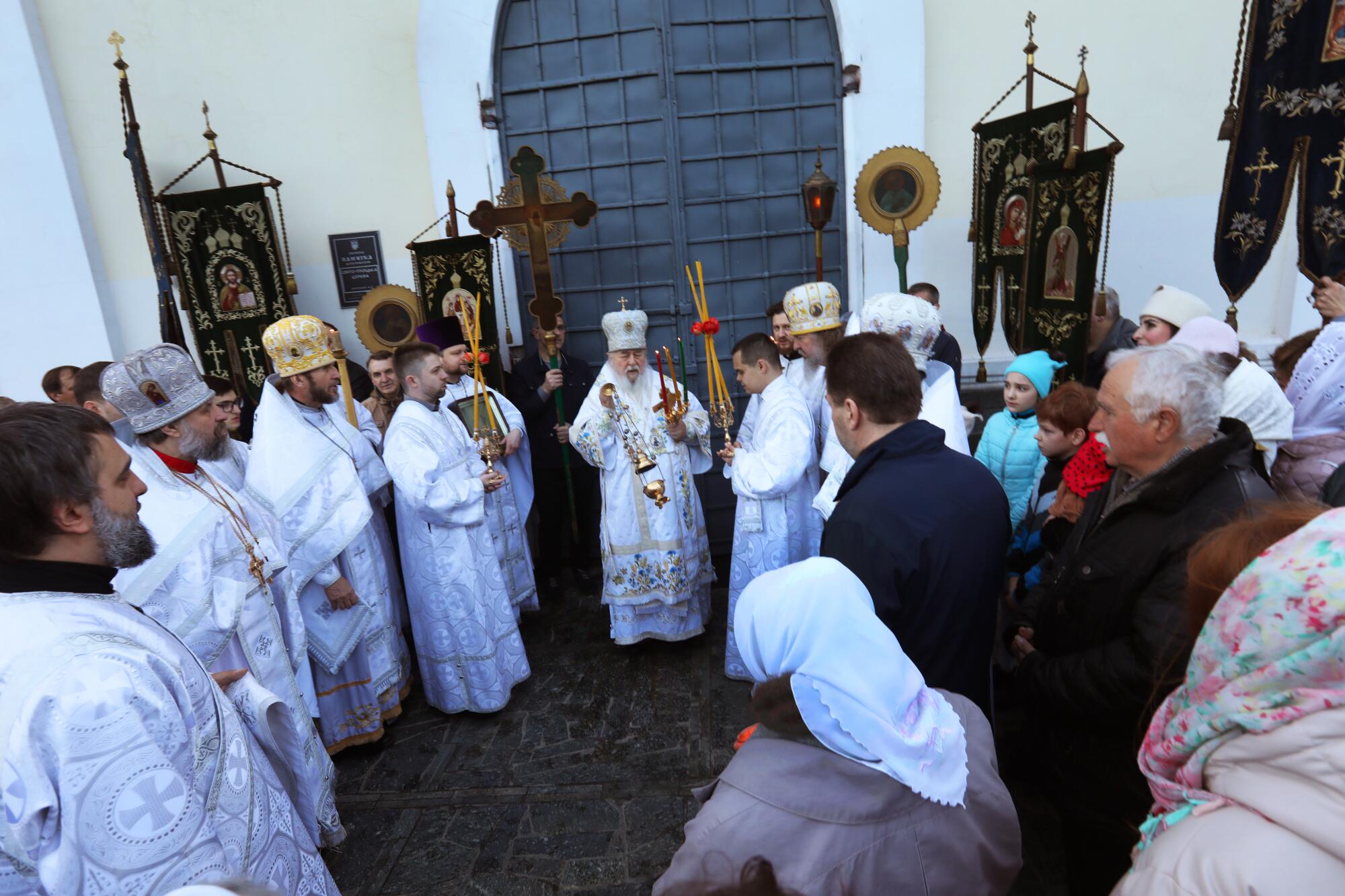
Entering a third month, the invasion is spurring the largest refugee crisis in Europe since World War II with more than 5 million fleeing the country and 6.5 internally displaced, according to the U.N. However, Russian troops are failing to make significant territorial gains because of a robust defense, Western officials say.
“Poor Russian morale and limited time to reconstitute, re-equip and reorganize forces from prior offensives are likely hindering Russian combat effectiveness,” the British Defense Ministry’s intelligence assessment said on Sunday.
Russian forces have more artillery, tanks and heavy fighting units than Ukraine, but they have been plagued by problems as they enter a pivotal battle for eastern Ukraine.
The visit by Blinken and Austin follows a stream of European leaders who have already made what has amounted to a pilgrimage of sorts to Kyiv after the withdrawal of Russian forces from the area. Several countries are also reestablishing their diplomatic missions in the capital — the latest being Britain — after having left ahead of the war. The Biden administration will be under pressure to follow suit. U.S. diplomats initially relocated to the western Ukrainian city of Lviv and then pulled out altogether to Poland.
Zelensky said he “expected specific things and specific weapons” when world leaders come, adding that he had seen an increase in both the amount and the speed of arms deliveries, especially from Washington.
“They should not come here with empty hands,” he said before the arrival of the U.S. officials, adding that Ukraine should not be used as a prop for “tragic selfies.” “We will return all our land the moment we receive necessary arms.”
In Kramatorsk, one of the prime targets in Russia’s new phase of the assault, only a few dozen residents attended Easter midnight Mass at the Syvato-Troyitskyy church, a reflection of the tense, fearful atmosphere engulfing the city as the battles edge ever closer. Approximately three-quarters of the city’s population has been evacuated.
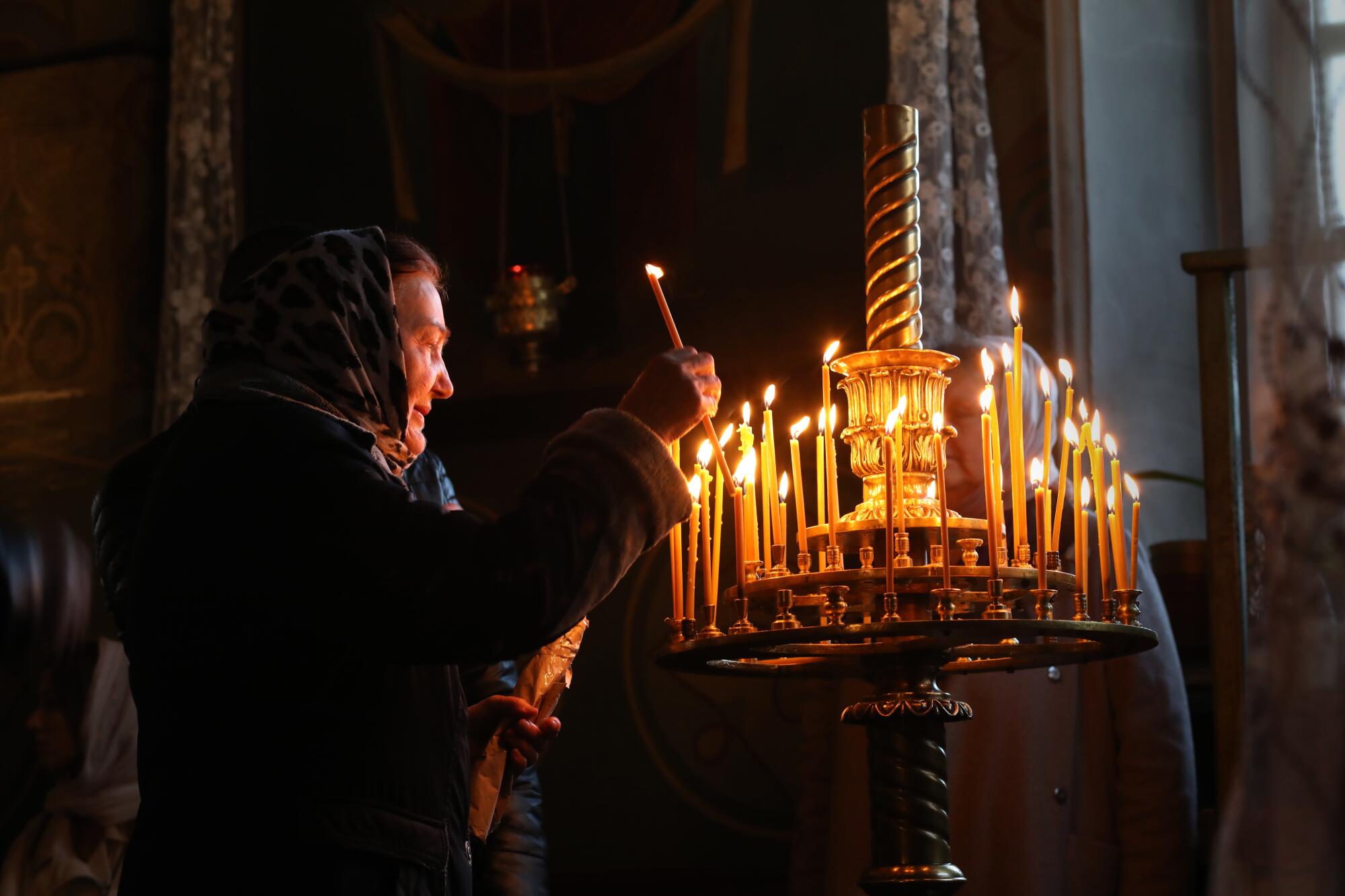
“Of course people are afraid to go out, but it’s my responsibility to be here in the church, to remain close to God,” said Sergei Kapitonenko, a 44-year-old priest in Kramatorsk.
Easter is the most sacred holiday on the Orthodox Christian calendar but was marked this year at cemeteries, in the ruins of bombed churches and with prayers for the dead, the missing, the trapped and those fighting.
“We’re praying that God gives us quiet, and will kick out evil from the hearts of people, and give them understanding and forgiveness in their heart,” Kapitonenko said.
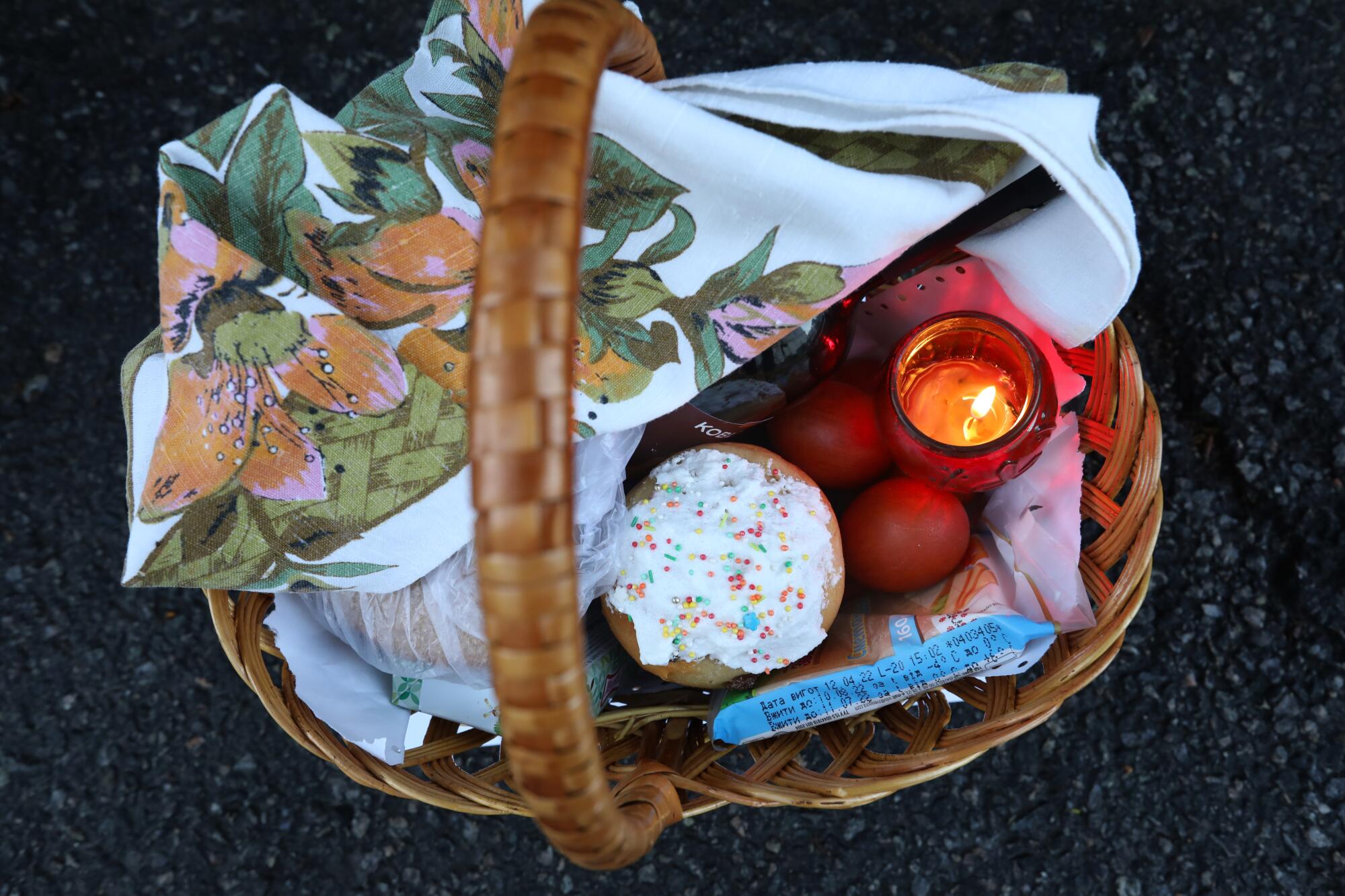
With services concluded, a few people came to the church to deliver baskets of colored Easter eggs and traditional Easter cakes decorated with sprinkles and icing as an offering to the needy.
Finland has long seen Russia as a threat. Now politicians and ordinary Finns are saying it aloud.
For Kapitonenko, a kindly-looking man sporting a long beard inflected with a few strands of white, the last two months of the war had been “almost like a movie.”
“It’s unreal for me. It’s hard to understand what’s happening, that it could be like this,” he said.
Still, he chose to stay. The situation was still relatively quiet in Kramatorsk, he explained, and as long as the possibility was there to stay, he would.
“The people still here, they’re the children of the church,” he said. “And the father cannot leave them and run away elsewhere.”
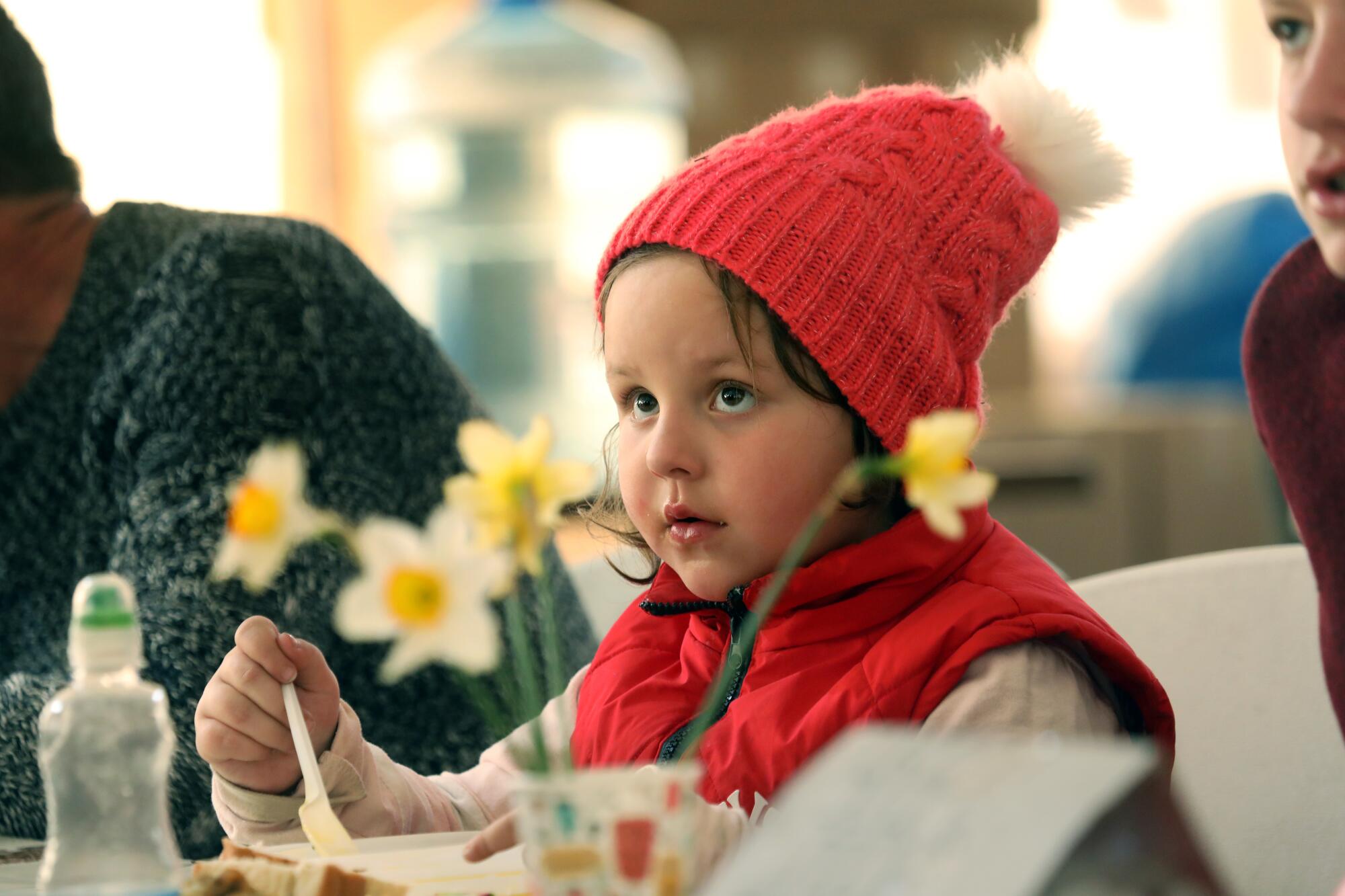
Several hours to the west, in the river city of Dnipro, Ukraine’s fourth largest on the edge of the Donbas region, hundreds of worshipers emerged early Sunday when an overnight curfew lifted at dawn to celebrate Easter at the Troitska Church, which was bathed in the light of hundreds of candles inside.
They circled the church carrying Easter baskets, filled with cakes, fruit and other goodies, each with its own candle. Normally the food would be blessed by the priest and then taken home to share within the family on Easter, but this year all the baskets are going to the soldiers on the front lines, the residents said.
Another 50 miles or so to the south, the checkpoint on the eastern edge of Zaporizhzhia was quiet until early afternoon, when a police car, lights flashing, led a convoy of a dozen cars or more, all people escaping Russian occupation in the southern city of Melitopol, which fell to the Russians several weeks ago.
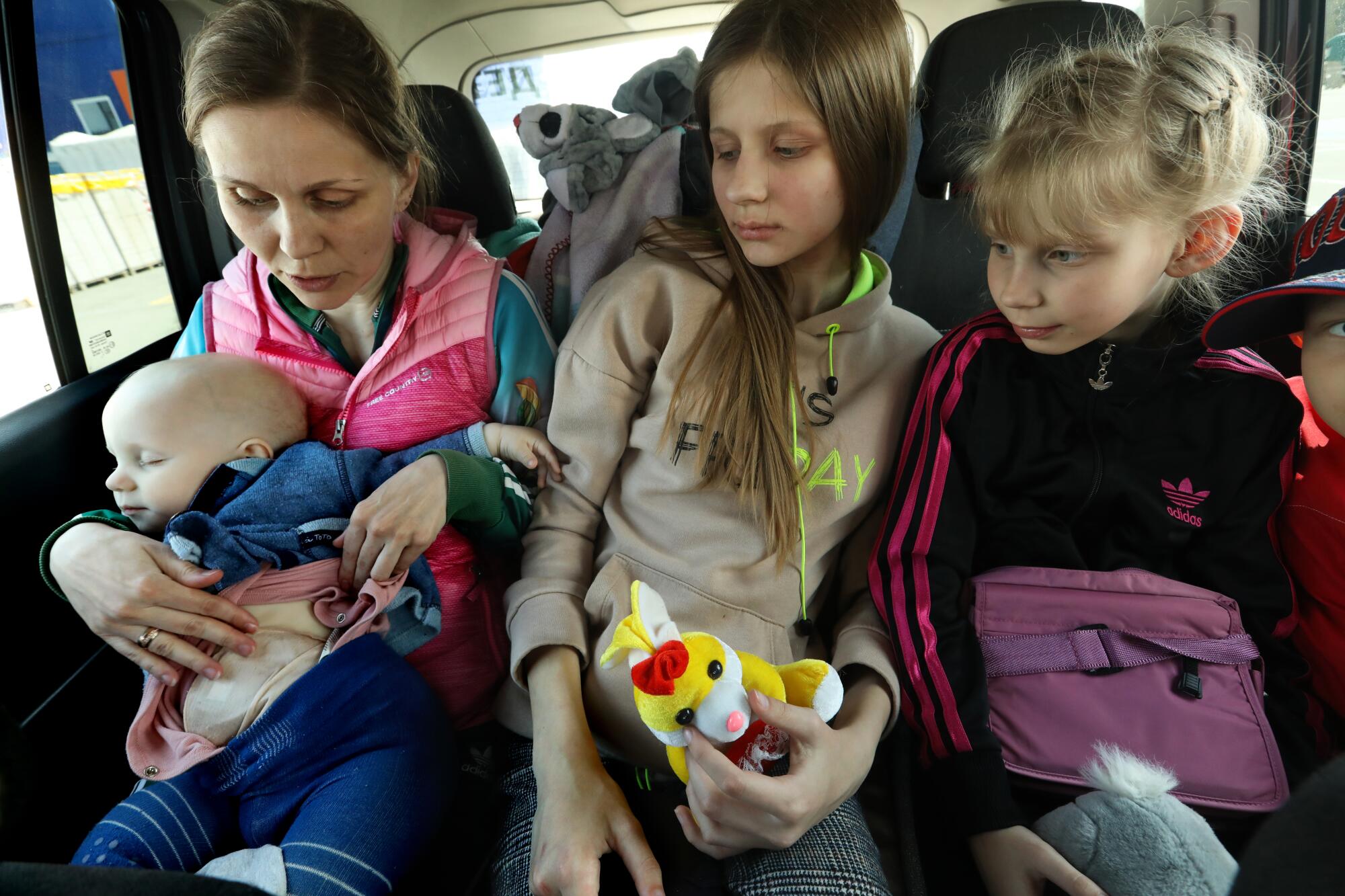
Tatyana Brogko, 42, was squeezed into the back seat of a car packed with five other members of her family. They escaped from a resort town on the Sea of Azov also now held by Russians.
“I was so scared at the Russian checkpoints,” she said, wiping away tears of relief. “They were checking all the passports, checking the men for tattoos. I didn’t understand anything they were saying. There were 20 checkpoints. Thank God they didn’t do anything to us.”
Zaporizhzhia has become a way station for refugees fleeing Melitopol and Mariupol, with volunteers offering shelter, food and medical care.
Several of those arriving said they were taking advantage of the Easter holiday to escape, hoping the fighting would have calmed.
Zelensky issued an Easter message to his people. Speaking from the gold-domed St. Sophia Cathedral in Kyiv, he noted the majestic house of worship survived invasions and occupations through the centuries and still stood strong — an analogy he made to the nation.
“We are enduring dark times,” Zelensky said, but added: “Today we all believe in a new victory for Ukraine. And we are all convinced that we will not be destroyed by any horde or evil.”
Bulos reported from Kramatorsk, Wilkinson from Washington and Cole from Dnipro and Zaporizhzhia.
More to Read
Sign up for Essential California
The most important California stories and recommendations in your inbox every morning.
You may occasionally receive promotional content from the Los Angeles Times.
